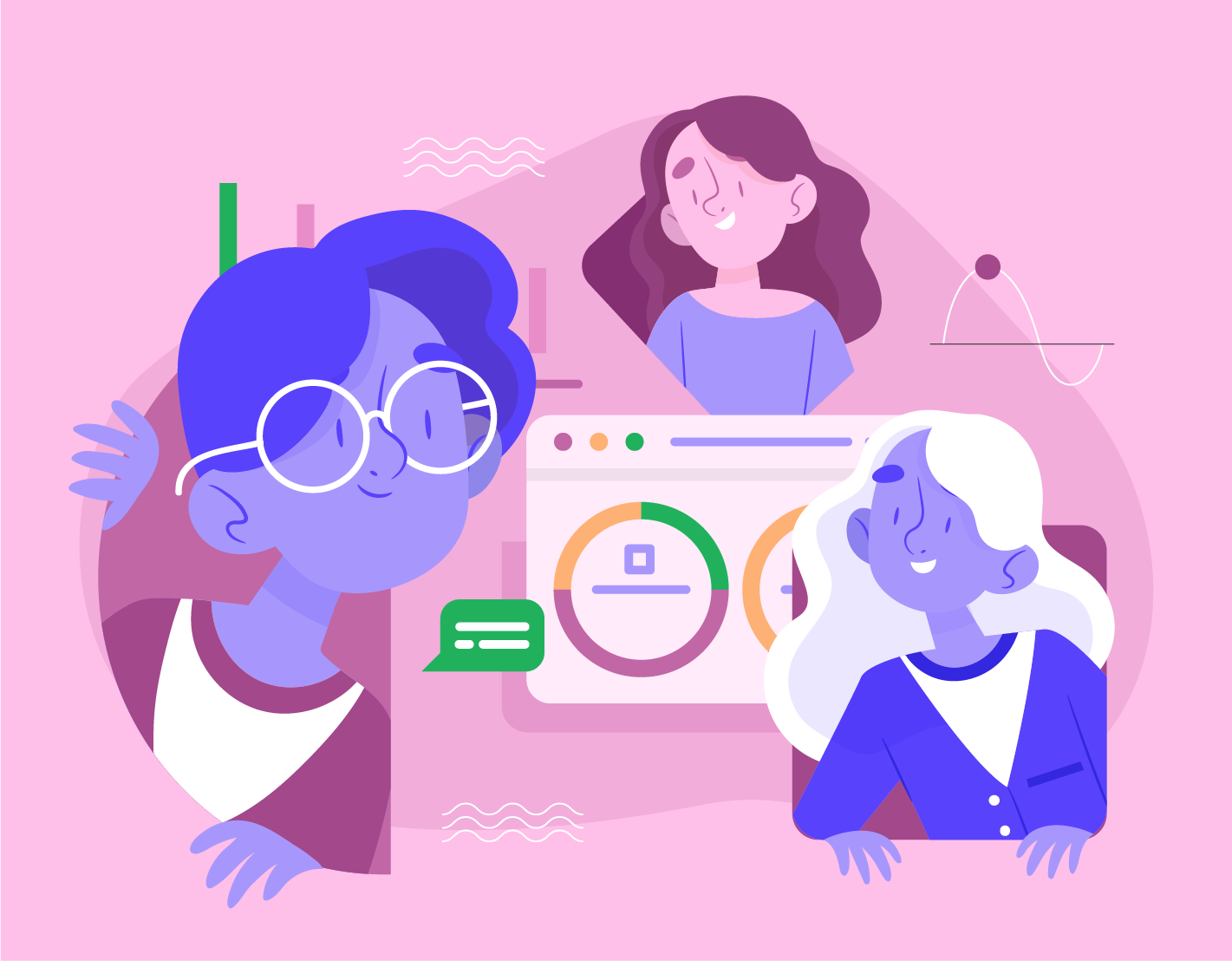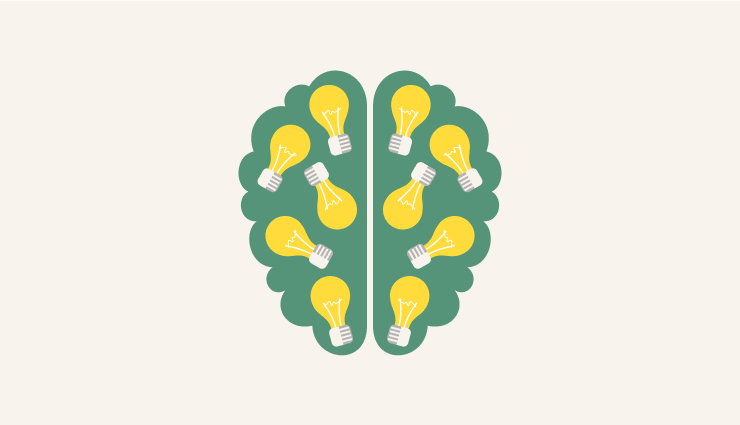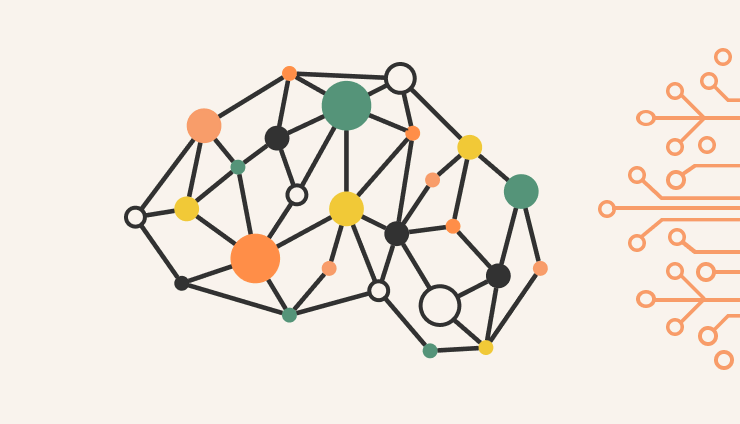It’s important to note, however, that learning retention is among the biggest challenges learners face. As human beings, people tend to forget things quickly and easily over time. According to a study, people forget 50% of the information presented to them after one hour, more than 70% after one day, and 75% after six days.
Plus, you can’t force learners to store information. Your academic eLearning courses and corporate training programs need to have built-in learning retention boosters that will motivate learners to remember the ideas and concepts they’re exposed to willingly.
This guide provides valuable insights into how to improve learning retention for your academic or corporate learners. But before that, let’s understand learning retention.
What is learning retention?
Learning retention can be defined as a process by which acquired information is transmitted from one’s short-term memory to their long-term memory in such a way that it can quickly and easily be retrieved when required.
Interestingly, learning retention isn’t a novel idea. Back in the late 19th century, Hermann Ebbinghaus explained learning retention using the Forgetting Curve. The curve highlighted that if no effort is made to retain newly acquired information, 70% of it would be lost in around 24 hours.
When discussing learning retention, you can’t overlook the concept of the learning retention pyramid. Also known as the ‘cone of learning, the learning retention pyramid was introduced by the National Training Laboratory. It suggests that varying learning methods can lead to more effective learning and better learning retention because certain methods are more effective than others. The model shares insights on the following learning methods:
Teaching Others
Based on the learning retention model, teaching others is by far the most effective way to retain acquired information. You can attain a strong mastery of the concepts and lasting retention if you’re able to teach the subject to others correctly and accurately. The pyramid states that students or other learners can retain as much as 90% of what they teach.
Practicing
The next most powerful way to retain obtained information is to practice doing what has been learned. This method leads to information retention of about 75%, according to the learning retention pyramid. Not only are learners able to remember what they’re exposed to, but putting theory into practice also helps them grasp a deeper understanding of the concepts and ideas. Furthermore, it makes the learning content more meaningful and learners can see how it can help in their personal career growth.
Discussion
Moving ahead, discussion is a form of cooperative learning method, whereby students interact with each other and with instructors to reinforce the acquired concepts. Likewise, corporate learners can discuss the ideas and skills obtained through training amongst themselves. As stated by the learning retention pyramid, this form of learning helps retain 50% of the information.
Demonstration
When the information is confusing or ambiguous, demonstration helps learners grasp concepts more easily and quickly as opposed to passive learning methods. It helps retain 30% of the information.
Audio-Visual
The audio-visual learning method, according to the learning retention pyramid, leads to learning retention of only 20%. The method includes digital learning courses or training programs with sounds, videos, pictures, and other graphics. However, the effectiveness of such courses and programs can be greatly improved by developing relevant, more visually appealing, and engaging content. If your eLearning course is created while keeping in mind the learners and their interests and using the right engagement tools, it can ensure learning retention. Your vendor for your learning management system plays a key role here.
Reading
While reading is a necessary method of study in most academic institutions, it’s still one of the less effective methods for retaining information. As per our learning retention pyramid, this method leads to only 10% learning retention.
Lecture
Based on the pyramid, lecturing is the least or most ineffective method for retaining information. As a passive form of learning, it’s nothing more than sitting back and listening to what the instructor or trainer is saying. Even in the academic context, it’s normally useful for students who come prepared, actively participate in the discussion, and take down notes.
Now that you’ve understood what learning retention is all about and what methods prove more effective, let’s find out how to improve learning retention for your eLearning programs:
How to Improve Learning Retention
Develop Engaging eLearning Content
Keep in mind that different learners are comfortable with different types of content. Some are used to watching videos, some like to listen to audio, and many others prefer both. So, how to improve learning retention for your eLearning courses?
According to educational psychologists, one incredible technique to make your program more memorable is to use a variety of content. Thus, try to incorporate different types of content in your eLearning modules. For instance, you can commence the training program with a short, introductory video, then use the audio to orally explain a relevant concept, and then require learners to note down their understanding of the topic before presenting a quiz. Don’t hesitate to provide additional resources relevant to the topic, such as podcasts, reading materials, etc., that learners can use to learn more.
When choosing an LMS, make sure that you select one that allows you to mix and match various content formats. If you have limited resources, consider using content options outside of your company. For instance, you can even repurpose your existing eLearning content with external yet trusted resources, including relevant podcasts, YouTube videos, Slideshare presentations, reading materials, and more.
Explain ‘What’s In It for Me?’
Learners want assurance that their time away from busy schedules will be worthwhile. If they don’t see how a course will impact their lives or work, they won’t feel motivated to retain the knowledge. You must reinforce the value of your eLearning course and clearly explain why learners should retain the information. But how do you do that?
Start by brainstorming the possible takeaways of your eLearning course for learners. Ask yourself what they will be able to achieve or accomplish once the course is over. Ask yourself how they can use the information in real-life settings. Once you’ve figured this out, convey the information to the learners. When they know about the practical application and benefits of the training, they’ll stay motivated throughout the course and will be more likely to retain the learning.
Adopt Blended Learning
One of the best ways to improve learning retention is by using blended learning. It’s a style of education or training in which students or employees learn both through an LMS and via face-to-face webinars, training, ILTs, and similar sessions based on live participation. By combining the measurability and convenience of an LMS and providing a more dynamic learning experience, blended learning establishes a personal touch that dramatically improves learning retention.
For example, start with a webinar or in-person session on an interesting topic. Then, create an LMS to summarize key points. That way, learners can review the material as many times as necessary to fully understand and retain it. You may also feature that webinar or in-person session in your eLearning course. This repetition of content further improves the chances of learning retention.
Also, combining a live element with online training or eLearning humanizes the training experience for your learners. Learners have the opportunity to directly engage with subject matter experts so they can clarify any confusion and have their queries addressed. Learners can also interact with each other and build relationships. All these aspects enabled by face-to-face learning can both increase their knowledge and improve learning retention.
Make the Most of Microlearning
You may have tons of insights and valuable knowledge to share with your employees or students. However, as the learning retention pyramid points out, a 2-hour lecture, webinar, or in-person training session is the least effective method of learning retention. Employees and trainers won’t retain everything from a lengthy session.
Corporate trainers and instructors need to realize that learners can only hold three or four ideas at a time. A Live Science study confirms that short-term memory holds no more than four items at a time. Hence, a much better approach is to break the information down into bite-sized chunks. This makes it remarkably easier for learners to grasp and retain information. This is where microlearning comes into play.
Microlearning is about keeping your online course focused on a maximum of 3 most critical takeaways at a time. This way, learners won’t feel overwhelmed by the information delivered to them. Thus, they’ll not only find it easier to retain the learning but also be willing to learn more about the subject.
Use Novelty
If you’ve ever sat through a long training session on familiar topics, you understand the frustration. We all prefer the new and unexpected. Likewise, students or corporate learners crave new information that seems exciting and fresh.
Learners not only want novelty in information, but they also learn better when they are provided with it. Based on an old 2006 study, a novel learning environment sparks exploration and learning retention. Thus, another great method on how to improve learning retention is to use novelty to your advantage. You can do this by simply coming up with unexpected or unusual ways to educate or train your learners.
Incorporating novelty doesn’t have to be something out of the box. It can be as simple as throwing in a surprising image or a startling statistic. Instead of using boring bullet points, try an interactive game or a visually appealing infographic to present information.
As mentioned in the previous point, keeping the training sessions short and succinct is another effective way to demonstrate novelty. Learners will view each training module as an exciting opportunity to learn.
Final Word
By now, you should have developed a clear understanding of how to improve learning retention in eLearning. Whether you’re a lecturer or trainer, these tips will make eLearning more valuable by helping learners retain and apply ideas.







